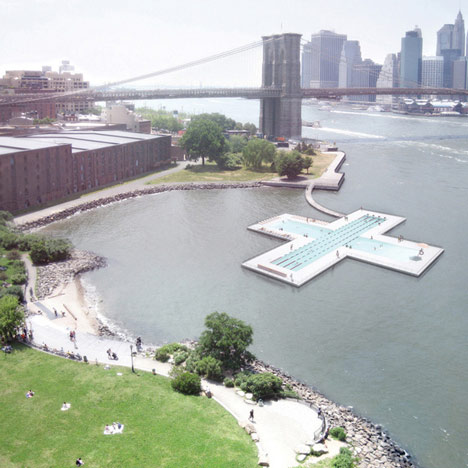
- Permbajtja
- prev
- next
- prev
- next
-Alvaro Siza
The design takes advantage of natural depressions in the rocky terrain and embeds basins of salt water. The pools reach the ocean and mingle with other natural formations present along the coast of Matosinhos. The volumes are integrated into the landscape, hiding it and framing it at times, but clearly highlighting this human intervention on the natural site. Siza created a deliberate contrast between the organic stones and the sharp geometry of his architecture.
The building is arranged parallel to the walkway, leaving the horizon completely unobstructed from the road. Access to the facilities is via a subtle ramp that gradually hides the view of the traffic and the ocean. This transition between the road and the sea stands out as a sensory experience - as you travel down the walkway the ocean becomes less and less audible. When leaving the changing rooms, one enters into a series of platforms and the water again becomes the dominant view, the pools appear between the vast ocean and the complex. Formed by low concrete walls, natural rock formations are scattered along the edges of the pools which merge with the ocean horizon. This intentional vagueness blurs the real understanding of the boundary created and visually increases the length of the space.
The complex is made of concrete, with exposed wooden beams. The tone of the concrete used is slightly lighter than the rocks on the ground, showing the presence of man in the natural environment. The covers are made of wood, covered with copper plates on asphalt screens.
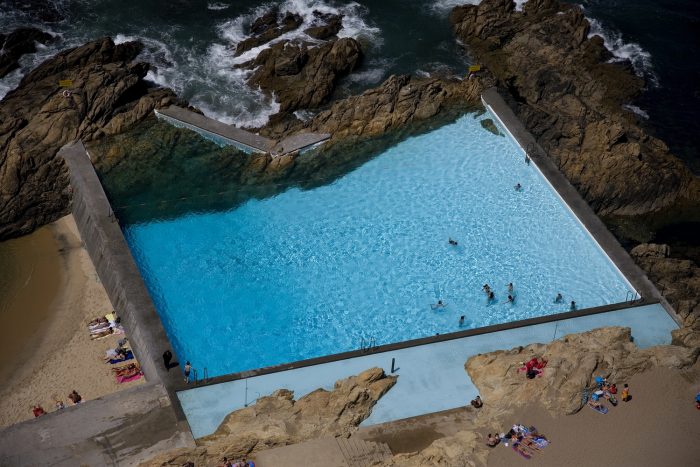
-Herzog and de Meuron
Understood as a bathing lake, Naturbad Riehen was modeled after the natural pool on the local "Badi", Basel's traditional wooden Rhine-side baths, which combine a lively atmosphere with a timeless appearance.
Planted filtering cascades purify the water and define the soft edge of the lake, as the site's southern perimeter opens up to the river, bounded only by a green hedge. A multi-functional timber wall, that offers a 200-meter long sheltered solarium with recliners, shields the site on the north and west from the adjacent roadway as it connects to an entrance on the east that provides support amenities.
The biological water treatment basins – the non-mechanical “heart” of the baths – are embedded in the sloping landscape on the opposite side of the road.
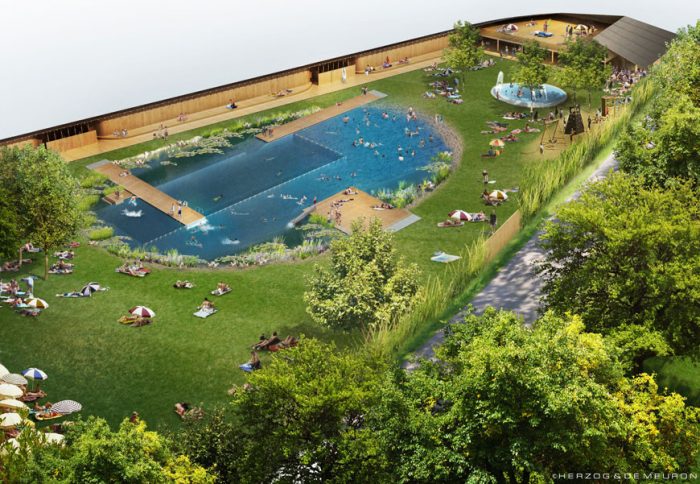
-HAL Transparent pool
Architecture studio HAL has created a 35-metre-high transparent swimming poolbridge between two buildings at the Embassy Gardens development in Battersea, London.
Named Sky Pool, the 25-metre-long swimming pool is made entirely from acrylic panels, allowing swimmers to look directly down to the ground 35 metres below.
HAL designed the pool, described by the studio as the world's first, to be a structure with "a sense of fun" that gives people "a swim like no other".
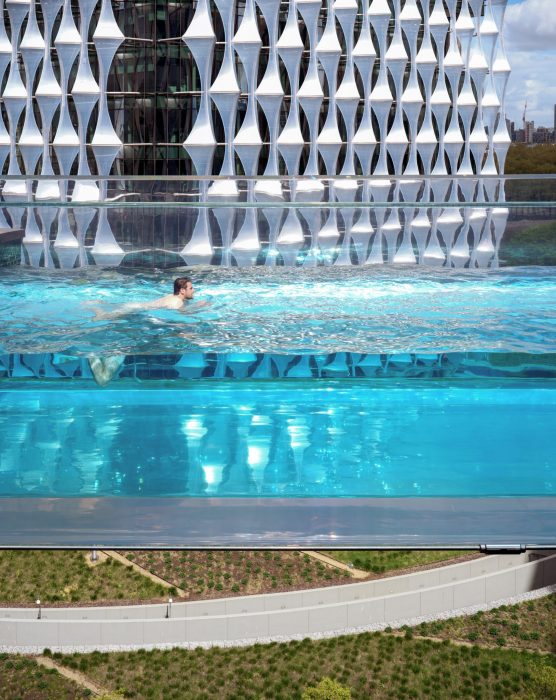
-Carpa Olivera Collectivo Urbano
As a proactive team that generates ideas for improving their city, Colectivo Urbano, composed by five architecture, landscaping and urnbanist firms, made the proposal to rescue this public space to the Mazatlan Investment Unit, led by the architect Roberto Diaz. Proposing to recycle, clean and return this pool fed by tidal water to it´s splendor, and integrate a new playful element: a spiral slide that dramatically promotes the social reactivation for local and tourist, where children and families have fun. This element acts as a strong singular sculpture by the sea. As a sustainable strategy, a commercial space that will be proposed concession, giving due attention to the maintenance and monitoring of the site, ensuring optimum operation conditions without direct cost to the city of Mazatlan. On the top level and connected to the pedestrian sea wall is a open area, that serves as a lookout and where a pre-existing sculpture is relocated, allowing pedestrians to rest in a perimeter bench while watching the horizon and the beautiful Mazatlan sunsets.
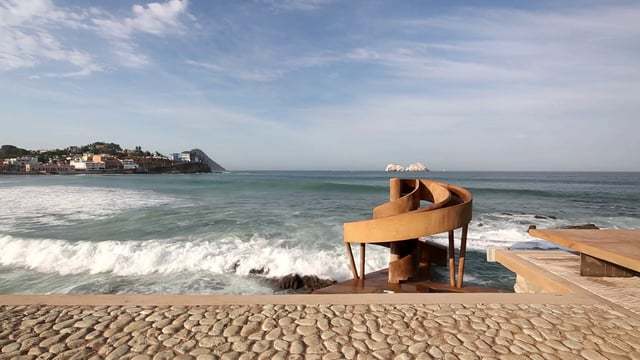
-Pool+
+Pool is the collaborative initiative of design studios Family and PlayLab to build a floating pool for everyone in the rivers of New York City. The project was launched with the ambition to improve the use of the city’s natural resources by providing a clean and safe way for the public to swim in New York’s waters. As both a public amenity and an ecological prototype, + Pool is a small but exciting precedent for environmental urbanism in the 21st Century. + Pool is for you, for your friend, for your mom, for your dad, for your girlfriend, for your boyfriend, for your kids, for your boss, for your bartender, for your tamale guy, for that dude over there, for New York City, for everyone. An offshore reflection of the city intersection, + Pool both exemplifies the dense, busy character of New York City and offers an island retreat from it.
